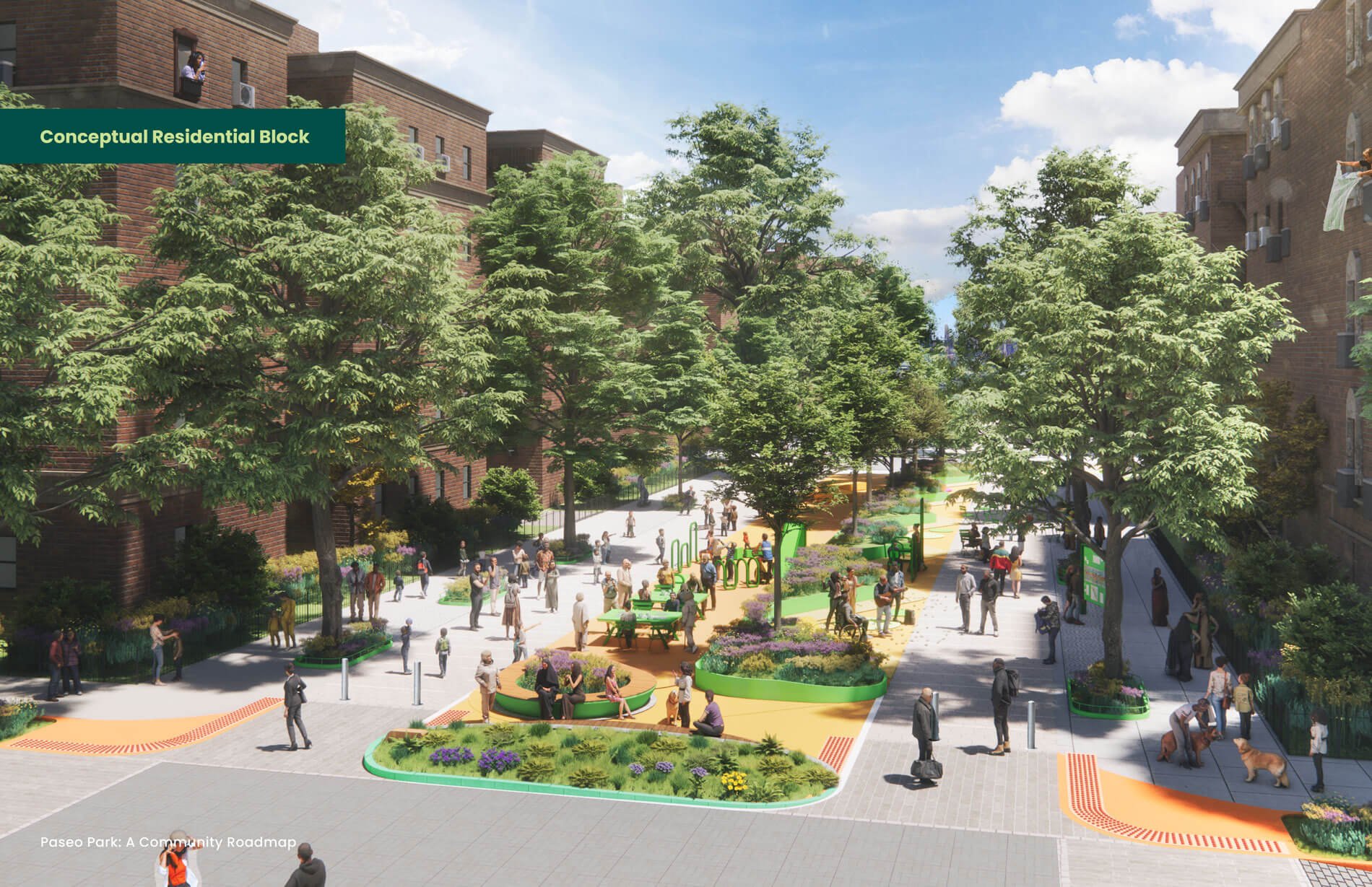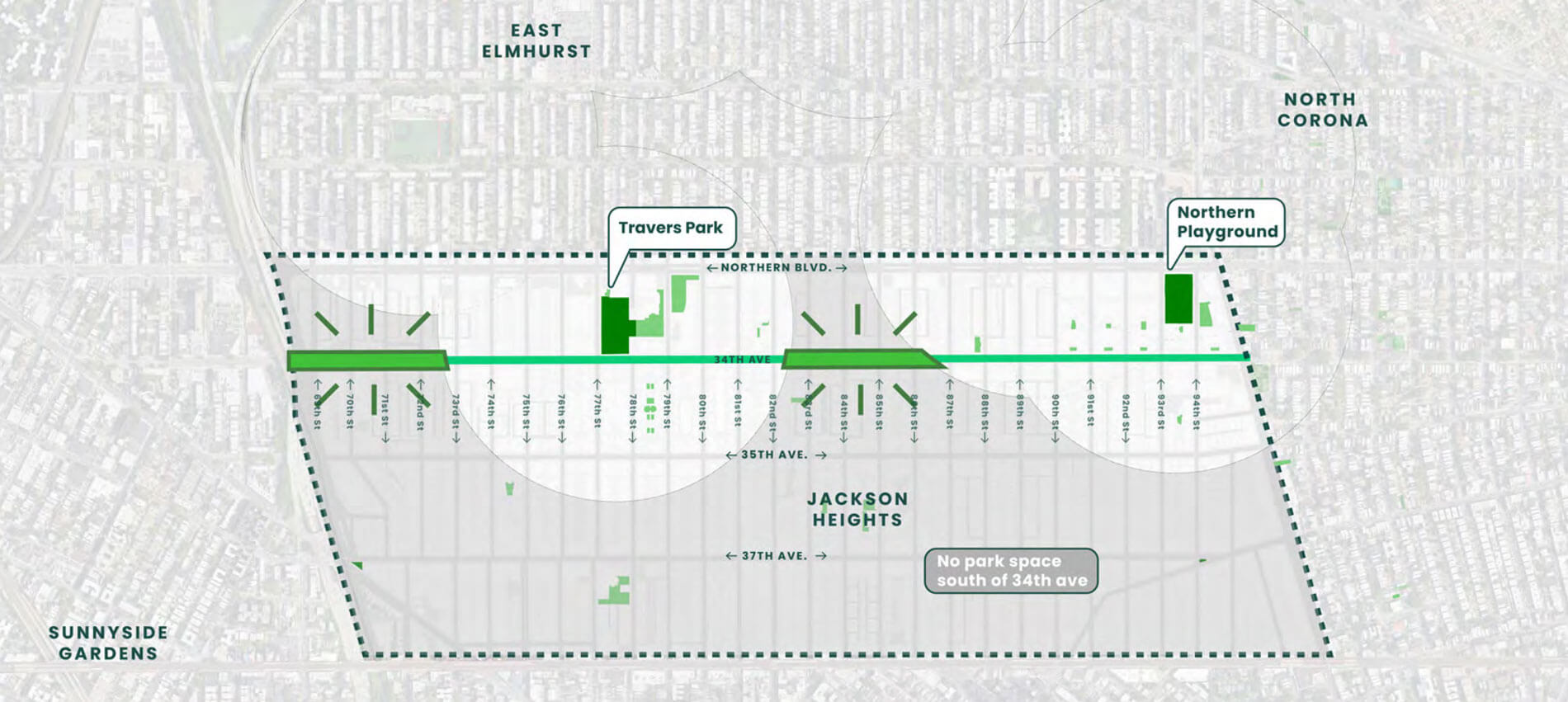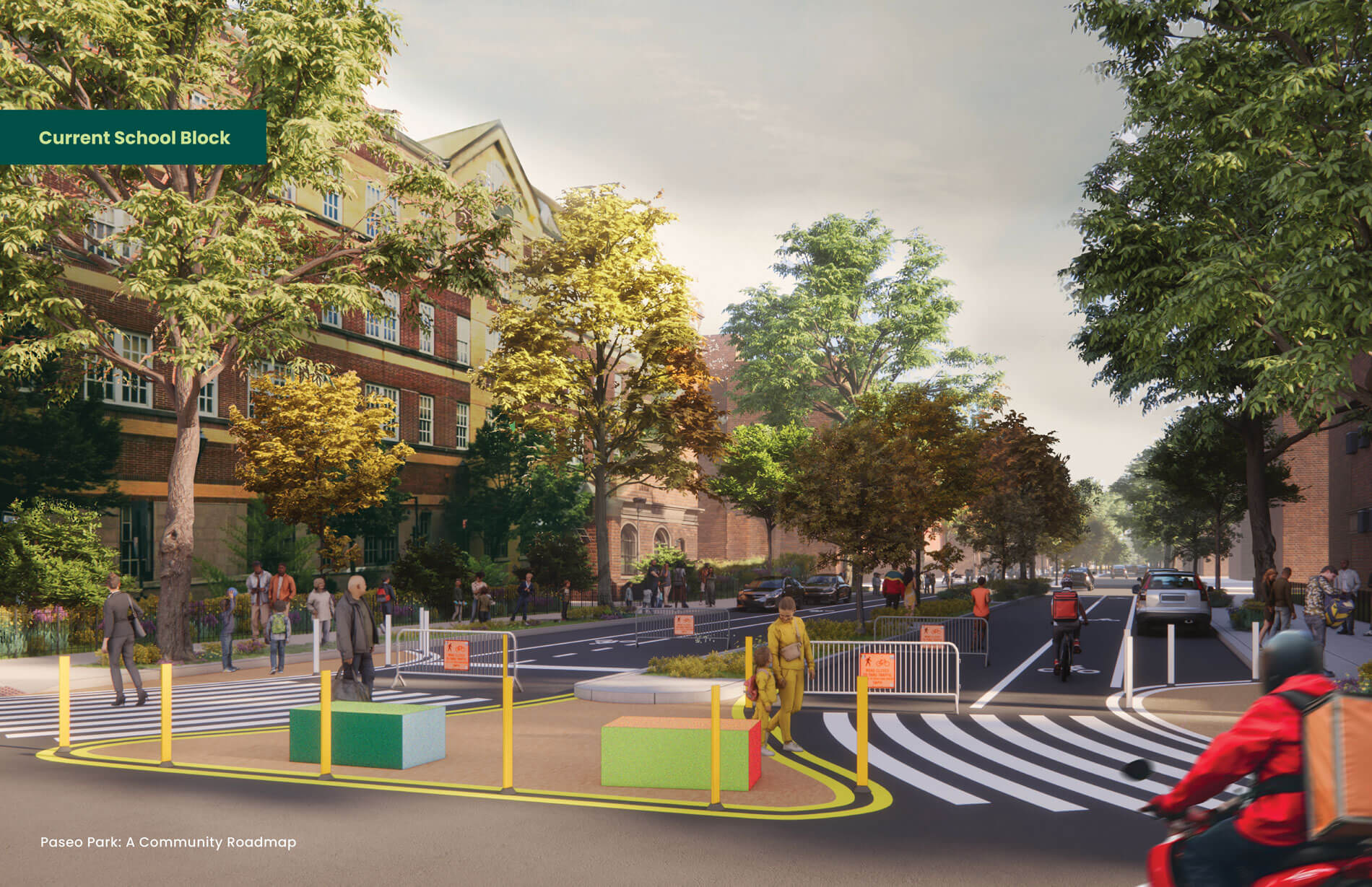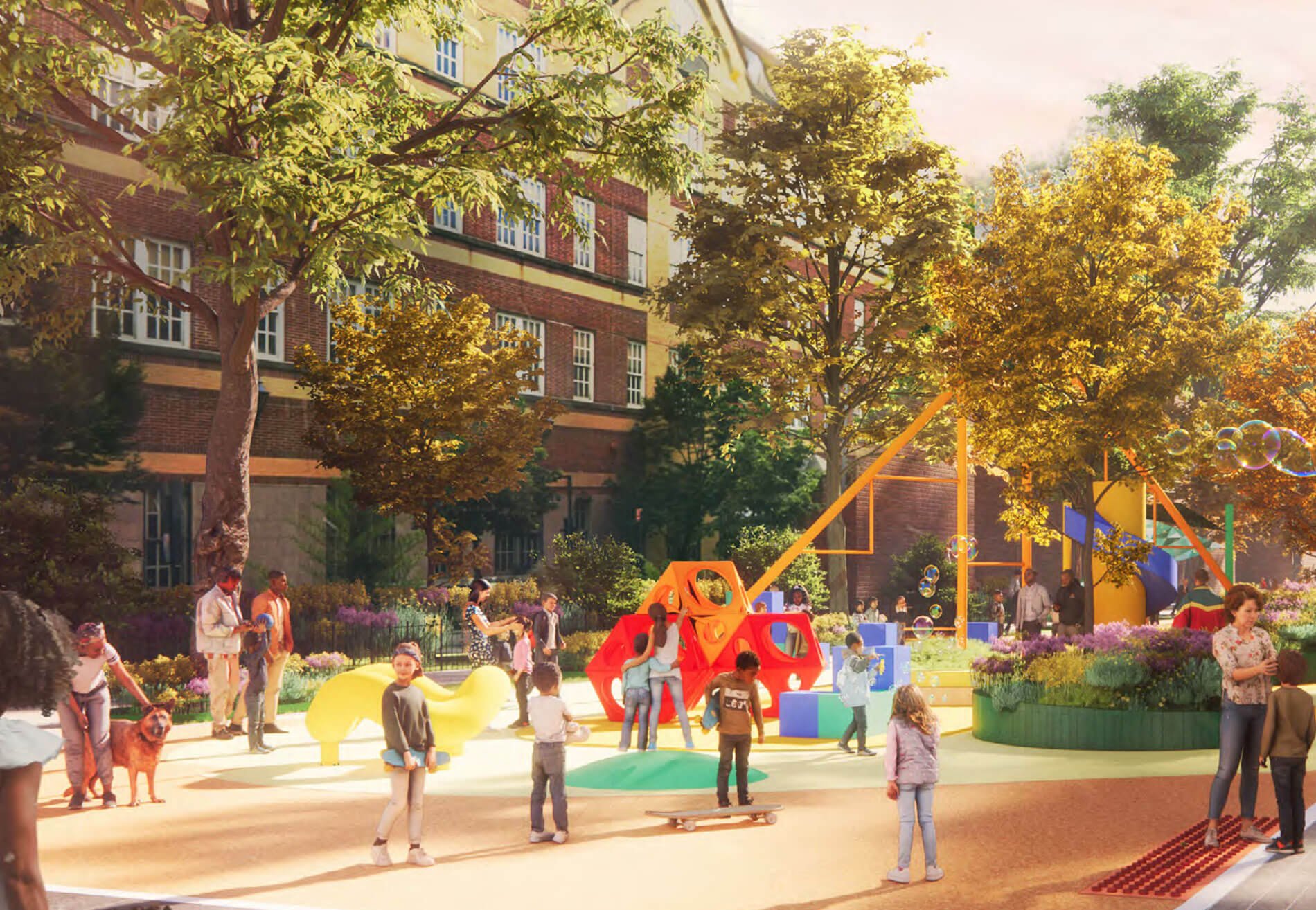Swaths of 34th Avenue in Jackson Heights, Queens, were transformed during COVID-19 under the Open Streets program, granting pedestrians space to romp around and cyclists to whizz by—all sans cars. This brought myriad public realm improvements to a New York City neighborhood that ranks last in public park access, a place dubbed “the epicenter of the epicenter” during the pandemic.
In 2021, one year after 34th Avenue Open Street was established, a petition gathered signatures to make the 26 blocks permanently pedestrian and car-free. Now, WXY and Alliance for Paseo Park are working to make that a reality.
Paseo is the Spanish word for “stroll.” WXY and Alliance for Paseo Park shared their vision this week for Paseo Park, a 1.3 mile stretch bound by I-278 and Junction Boulevard.

WXY is a natural partner to work with, given the office’s panache for community engagement. Take for instance the work they’re doing to desegregate New York City public schools, and at the Kingsbridge Armory in the Bronx.
Past WXY projects in Queens include the Corona Plaza street vendor redesign, the Long Island City Neighborhood Plan, and Queensway Plan. “Paseo Park is a reimagining of how our streets can serve the full spectrum of urban life,” WXY’s Claire Weisz shared in a statement.
“Working closely with the Jackson Heights community, we’ve helped articulate a vision that meets both hyperlocal needs and a growing global demand for equitable, climate-resilient public space,” she continued. “That means designing for all generations, but also confronting the realities of a changing transportation landscape.”
Taking a Stroll
The New York City Department of Transportation (DOT) started organizing hearings for Paseo Park in 2022, and the nonprofit Alliance for Paseo Park launched in 2023. Outreach for the Paseo Park project, shepherded by Alliance for Paseo Park and WXY, started last summer, culminating in the plan’s release this week.
The main changes to 34th Avenue would be wider medians, and raised street beds and crosswalks, bolstering safety and community.
“We see Paseo Park as part of a holistic corridor plan that accommodates pedestrians while creating alternate, safe routes for high-speed e-bikes and mopeds,” Weisz added. “What’s happening in Jackson Heights is a model not just for Queens, but for cities everywhere seeking to rebalance their streets to serve people first.”

Paseo Park would be divided into three different types of blocks: school blocks, active blocks, and passive blocks. The school blocks would face public schools and be designed for school children, stocked with playground equipment and skate parks. The active blocks would facilitate large community gatherings; passive blocks would be for smaller groups.
“Our community is clearly calling for a pedestrian-first space, where children and our elders can be safe from speeding vehicles. What was once a cut-through street, where kids were hit by speeding cars, can now be redesigned as a community front lawn, providing safe recess space for six public schools, many of which lack play yards,” said Dawn Siff, Alliance for Paseo Park executive director.


The community roadmap took a year to put together. It was informed by eight tabling sessions and two community visioning workshops, facilitated by Alliance for Paseo Park volunteers, as well as multilingual in-person and virtual meetings with neighbors, local leaders, organizations, and businesses. Local Girl Scouts designed a survey so that children could share input.
“I grew up in this neighborhood without access to green space. I could only peek through the gates of the beautiful private co-op gardens,” said Luz Maria Mercado, Alliance for Paseo Park board chair. “Green spaces should be for everyone, for the health of our community, that’s why we took on this challenge, as volunteers from the community, reaching out to our neighbors ourselves.”
“This report is not meant to be prescriptive, but to point a direction forward, to help our neighbors imagine what is possible,” Mercado noted. “We can unite to design a safe space for children, families and our elders; that puts pedestrians first; that maintains access for City services; and that helps protect people, homes, and businesses from flooding.”
→ Continue reading at The Architect's Newspaper
